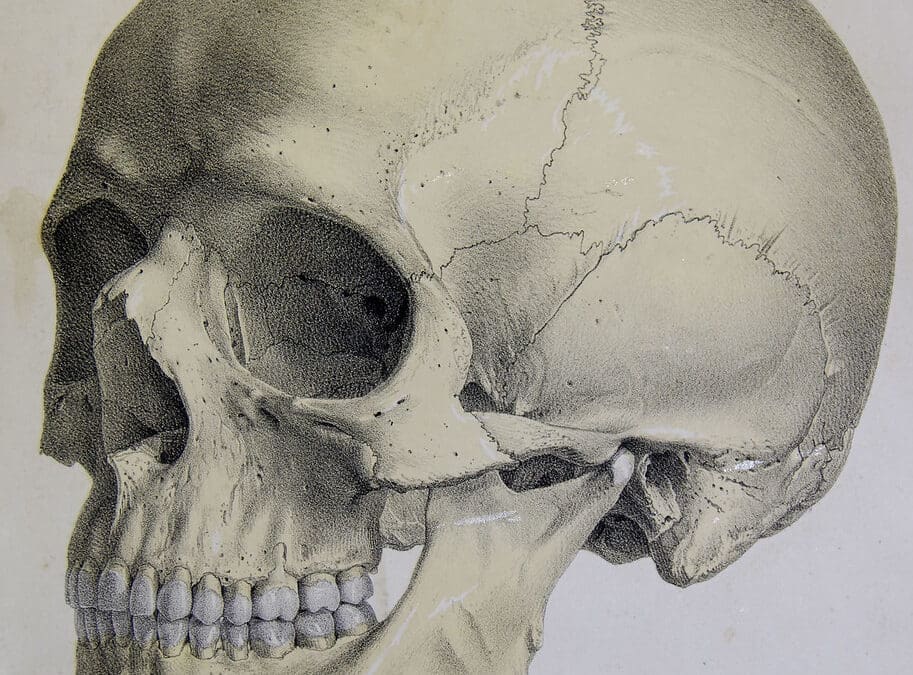The soft mosses of a peat bog grow slowly and build up at a rate of mere centimeters per year. And most bogs have been forming and accumulating peat since the last ice age roughly 10,000 years ago. Beneath the lush moss on top is a dense accumulation of peat, often over 25’ thick. There is a common question asked on a bog tour, often asked in a hushed whisper “What happens if someone falls off of the boardwalk?” And occasionally, someone will ask about “bog bodies”.
The nature of peat is that it tends to be very acidic and full of natural acid chemicals called tannins. There is a clue right there in the word, as tannic acid has long been used to tan animal skins and turn them into leather. We have tested the pH of the water in the center of Shadow Lake Bog, and though the result fluctuates, it has been as low as 3.5; the same pH as white vinegar. This acidity makes it nearly impossible for decomposing bacteria to survive. So what happens to an entire body when submerged in tannic bog water?
Essentially, a body buried in antiseptic peat becomes a mummy, preserved by the tannins in the water. Over 1,000 mummified “bog bodies” have been found and studied from 266 sites throughout northern Europe, mostly in Germany, Denmark, Norway, and Ireland. In many cases the bodies are perfectly preserved, though in some the tannic acid has dissolved the bones. Radiocarbon dating places the ages of the bodies at between 8,000 to 2,000 years old. A few are even older. It is believed that these European people were largely the subjects of ritual sacrifice, with seemingly intentional mortal wounds, though some may have been punishment. (For reference, King Tutankhamen was buried around 1320 BC, roughly 3,300 years ago.)
To the people of stone-age Europe, bogs were special places. Most of northern Europe was heavily forested and inhabited by large carnivores like bears and wolves. But bogs were open and quiet, and mostly lacked scary wildlife. “Half earth, half water, and open to the heavens” they may have been considered the gateway to life beyond the present. Possibly the path to a soggy, but safe, afterlife.
North America is also home to bogs and other peaty wetlands. While we haven’t discovered any bog bodies here at SHADOW, the body of a Mastodon was excavated from a peaty pond in Sequim in the 1970’s. And a large gathering of 168 bodies was found in 1982 in east-central Florida, in peat-bottomed Windover Lake. Carbon dating has placed these burials at roughly 6,280BC; over 3,500 years before the Pyramids were built, and thousands of years before Europe’s bog bodies were laid to rest.
Essentially, a body buried in antiseptic peat becomes a mummy, preserved by the tannins in the water. Over 1,000 mummified “bog bodies” have been found and studied from 266 sites throughout northern Europe, mostly in Germany, Denmark, Norway, and Ireland. In many cases the bodies are perfectly preserved, though in some the tannic acid has dissolved the bones. Radiocarbon dating places the ages of the bodies at between 8,000 to 2,000 years old. A few are even older. It is believed that these European people were largely the subjects of ritual sacrifice, with seemingly intentional mortal wounds, though some may have been punishment. (For reference, King Tutankhamen was buried around 1320 BC, roughly 3,300 years ago.)
To the people of stone-age Europe, bogs were special places. Most of northern Europe was heavily forested and inhabited by large carnivores like bears and wolves. But bogs were open and quiet, and mostly lacked scary wildlife. “Half earth, half water, and open to the heavens” they may have been considered the gateway to life beyond the present. Possibly the path to a soggy, but safe, afterlife.
North America is also home to bogs and other peaty wetlands. While we haven’t discovered any bog bodies here at SHADOW, the body of a Mastodon was excavated from a peaty pond in Sequim in the 1970’s. And a large gathering of 168 bodies was found in 1982 in east-central Florida, in peat-bottomed Windover Lake. Carbon dating has placed these burials at roughly 6,280BC; over 3,500 years before the Pyramids were built, and thousands of years before Europe’s bog bodies were laid to rest.



Recent Comments